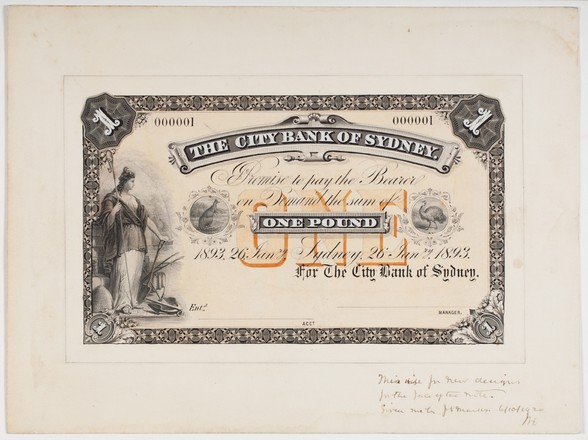
£1 note design City Bank of Sydney
1893
Watercolour and gouache on card
Bequest of Sir William Dixson, 1952
DN / P 117 & DN / P 118
Watercolour and gouache on card
Bequest of Sir William Dixson, 1952
DN / P 117 & DN / P 118
The City Bank commenced business on 9 February 1863, on the corner of King and George streets in Sydney. The financial strength of the bank was particularly evident during the Australian banking crisis of 1893, when it was one of only a handful of Australian banking institutions which did not suspend trading. With the bank’s notes backed by NSW government legislation, their issue was instrumental in overcoming stagnant trade and commerce.
In that same year, the bank changed its name to the City Bank of Sydney by an Act of Parliament (An Act to alter the title of ‘The City Bank’ to that of ‘The City Bank of Sydney’,16 March 1893). This change may have been the catalyst for new designs for the bank’s paper currency.
In 1911 the City Bank of Sydney was one of 16 banks to supply blank note forms to the Australian government. These notes were superscribed as redeemable in gold and issued as the first Commonwealth notes. The bank merged with the Australian Bank of Commerce Ltd (formerly known as the Australian Joint Stock Bank) in 1916, eventually to be absorbed by the Bank of NSW (now the Westpac Banking Corporation) in 1931.


 Back to list
Back to list